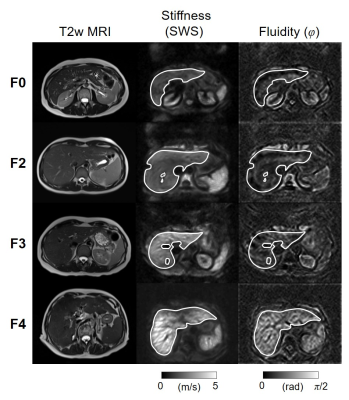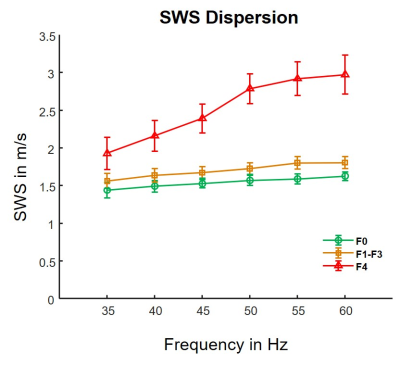Rolf Reiter1, Mehrgan Shahryari1, Heiko Tzschätzsch1, Matthias Haas1, Christian Bayerl1, Britta Siegmund2, Bernd Hamm1, Patrick Asbach1, Jürgen Braun1, and Ingolf Sack1
1Radiology, Charité - Universitätsmedizin Berlin, Berlin, Germany, 2Gastroenterology, Charité - Universitätsmedizin Berlin, Berlin, Germany
1Radiology, Charité - Universitätsmedizin Berlin, Berlin, Germany, 2Gastroenterology, Charité - Universitätsmedizin Berlin, Berlin, Germany
Although cirrhosis is associated with liver stiffening and transition towards rigid material properties, our results indicate high mechanical friction. This biophysical signature might provide a prognostic biomarker for the detection of end-stage fibrosis independent of stiffness.

Figure 1. Representative cases. Fibrosis stage F0: 51-year-old female healthy volunteer. F2: 31-year-old female patient with autoimmune hepatitis. F3: 53-year-old female patient with toxic liver disease. F4: 73-year-old female patient with diffuse liver metastases. For presented cases with F0/F2/F3/F4, fluidity (φ) was 0.60, 0.62, 0.63, 1.01 rad, and shear-wave speed (SWS) was 1.46, 1.64, 1.91, 3.22 m/s, respectively.

